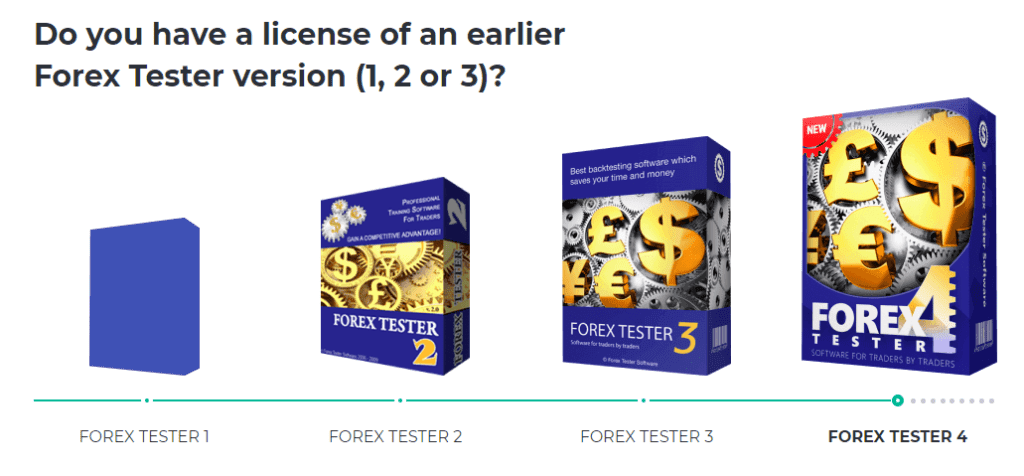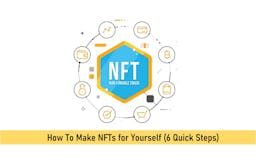
Why 74 – 89% of Retail Investors Lose Money
Winning is great…
But what happens when you lose?
Forex Brokers say 74 – 89% of retail investors lose money when trading financial instruments. These statistics are trading warnings to new and experienced traders notifying them of inherent risks to capital.
Despite these warnings, the market capitalization of the foreign exchange market is still on the rise, new accounts are opened every day and existing accounts continually gets new funding.
The foreign exchange market averaged $6.6 trillion worth of transaction per day in April 2019, up from $5.1 trillion traded in 2016, this represents 29.41% increase in funds that got into the market on a daily.

What then makes the market appealing to new and older traders? Why do investors stake huge sums knowing fully well of inherent risks in trading financial instruments?
The forex market is characterized by two major market moves, the “Bull” and “Bear” which interplay to keep prices soaring and possibly dipping as well, this happens within a short time frame.
Investors’ interest, market news and global events influence the market at the tick of the clock. Every trader must learn to exploit these opportunities as volatile market period presents better and wider spreads.
Many traders lose money for various reasons, overconfidence, slackness, faulty strategy, greed, poor risk management and sometimes unforeseen market events such as breaking news. Traders who fail to manage these influences suffer devastating financial blows early on in their trading careers.
Winning all the time in forex trading rarely happens, what then should I do when I lose?
SEE ALSO: Master Price Action in Forex with these Simple Steps
Define and Stick To One Trading Pattern
Are you trading long or short?
Trading long or short should be defined from the onset as one trading strategy differs from the other. There are instances where some traders’ day-trade today and swing trade for the rest of the week. You possibly could get lucky but your trading strategies could conflict and rupture your trades in the long run.
Trading with a long-term perspective in mind differs from scalping daily through the charts. In day trading, scalping the chart requires high level of alertness to take advantage of a bullish run. Day traders deploy high leverage which is appealing especially with little capital, but high leverage could hurt when used excessively.
Swing trading tends to allow prices adjust to its true value over a longer period (days to weeks). For instance, a day trader exits an open position as the market begins to head towards a close depending on the time zone and for the fear of taking a hit.
For a swing trader, this could as well be a point of positive price reversal in his favor.
Having a long term perspective gives room for corrections and adjustments of currency pairs to market realities in case you missed it. There is more room to readjust in day trading, but you can after taking profits or losses for the day and start afresh the next day.
SEE ALSO: Day Trading Strategies for Beginners
Day and Swing trading strategies has it Pros and Cons
Pros of Day trading
- A convenient starting point for new traders.
- You can target low spreads and enter/exit multiple times compounding gains.
- Technical analysis or chart reading is usually from a short term perspective e.g. 1hr, 1day or 5days.
- Scalping through the chart with a possibility of 0.5% to 3.0% points per day.
- Requires lesser capital to trade.
- Ideal trading strategy favorable for some currency pairs e.g. EUR/USD and GBP/USD
Cons of Day trading
- Requires daily commitment in time.
- Possibility of substantial losses over time.
- All trades must end within the market time frame.
- High transaction costs.
Pros of Swing trading
- Requires less investment in time.
- Long range profit perspective of about 10% – 60% in a month, depending on trader’s risk tolerance.
- Ideal trading strategy favorable for some currency pairs e.g. AUD/EUR, EUR/CAD, EUR/JPY and EUR/GBP.
- High returns per trade.
Cons of Swing trading
- Requires huge investment in research and strategy upfront.
- You must be able to manage your emotions and it is not suitable for every trader.
- Not a good starting point for beginners.
- Possibility of substantial losses over time.
Review your trading strategy and try again.
Review Forex Position size
Forex is usually traded in a specific amount called lots which is the number of units of a currency you can buy or sell.
Your lot size is more important than any entry and exit strategy in the world. A forex lot is the number of units of a base currency.
Type of Lots
Nano lot – 100 units
Micro lot – 1,000 units
Mini lot – 10,000 units
Standard lot – 100,000 units
Your lot size determines how much you can trade and what level of risks you can take. If your lot size is too big or too small, it means your risk taking could be either too big or too small. Too small and you may be missing out, too big and you could set your capital ablaze quickly and possibly through mismanagement.
Risks associated with trading could be classified into account risk and trade risk. The combination of these risk elements make up your ideal position size.
Knowing the right lot size depends on the tools you’re using to measure your risk since lot size directly impacts your account balance.
There are risk management calculators that analysis currency pairs, amount you wish to risk, stop loss and your account balance.
What this calculator does is to compute the data provided and present the right amount of lots to trade. This of course can be computed manually.
Remember, trading lot sizes impacts your account directly. It is recommended that you increase your lots gradually, but first check what you can afford to lose.
Here is a link to a Lot Size Calculator
Analyze Currency Pairs Making the Most Losses
Review the currency pairs you’re trading. There are 7 major and 14 minor currencies pairs in the forex market and all behave differently.
For instance, the EUR/USD currency pair comes on top being the most traded in the world due to its liquidity and tight spread. It is traded by most investment banks, fund managers, pro-traders therefore making it sometimes difficult to predict because of huge market influences on its demand and supply.
The EUR/GBP is another ideal currency pair for beginners, it is usually predictable owing to its gentle daily leaps of about 5 -10 points per day. The EUR/GBP is least volatile but can sometimes act bullish as other currency pairs.
When the EUR/GBP makes a move, its price leap is usually huge covering up for its calm nature. Taking up a few points off the huge spike a day is smart to get the best of this pair.
With diverse currency pair traits, it’s ideal to understand your chosen currency pair and make proper adjustments to its trends before you trade. It’s always best to stick to the currency pairs you understand.
Review Stop Loss Strategy
A Stop loss is applied during a trade to minimize losses on investment in stocks, currencies, derivatives and other financial assets by mitigating massive price depreciation.
A Stop loss strategy or plan guides a trader on the amount of risk he is willing to take. Targeting a near comfortable exit price is a determining factor. Unfortunately, some traders set a stop loss rather too late, when stock prices begin to fall uncontrollably.
It is usually recommended to set a stop loss before initiating a trade in order to avoid closing a trade after surpassing a realistic stop limit. Another important metric is the stock or currency’s historical price trend, Daily highs and lows are synonymous with day trading.
Beyond the investor’s capital and size of portfolio, historical price trend is a valid key indicator when considering applying stop loss. With a price trend you can determine how high or low the price of a stock or currency has attained within a given period.
These are stop loss placement methods.
Stop Loss Placement Methods
- Moving averages.
- Simple moving averages.
- Exponential moving averages.
- Percentage method.
- Support method.
Check Platform’s Trading Execution Speed
If you think clicking the BUY or SELL button means that your order is immediately fulfilled, then you may be mistaken. Once an investor places an order through his phone or desktop computer, his order is received through a broker not directly to a buyer or seller.
The broker considers the details of the order and decides how best it should be executed. With Electronic order entries, speed of execution is vital and this affects the overall cost of transaction.
Brokers have different motives; some fulfill orders internally. If your order size is beyond their capacity at that moment, they will channel to a third party who clears and sends payment before you are credited. All these backend processes take some time and could affect your trade position.
With poor execution speed or delays in execution, entry and exit price are not exact and will often result to a higher transaction cost.
Electronic Communications Network (ECN) brokers often match buyers and sellers quickly especially with limit orders (A limit order is an order to buy or sell a stock or currency at a specific price).
Order matching and fulfillment speed are factors to consider when choosing an online broker.
Improve Technical Analysis and Chart Reading Abilities
How well do you read charts?
A better understanding of the market’s currency charts gives you a clearer insight into the trading activity of the day. MetaTrader is still one of the best platforms for trading and as such, Live currency charts are at your disposal (free of charge) to use for analysis of price movements.
These are a few key factors to reconsider when reading charts.
The Right Charts to Use for Analysis
Some charts are more detailed than the others.
- Line chart
- Bar chart
- Japanese candlesticks chart
The Bar chart and Japanese candlesticks are frequently used by traders owing to its precision and clarity in price movement. The Japanese candlestick is much detailed showing the open, high, low, and close position of a currency, better informing the trader of price changes in real-time. For example, if the close is below the open then a filled candlestick is drawn in black. If the close is above the open then a hollow candlestick is drawn in white. The line chart is not this detailed and as such does not provide enough data for decision making.
The line chart is best for analyzing periodic trends.
The Japanese candlesticks and Bar chart is ideal for analyzing market pricing in detail.
Price and Time Axis
All charts have the price (Y-vertical axis) and time (X-horizontal axis). This means that further to the Y-axis, you can view historical prices within a corresponding time period and determine how far up or down a currency pair has traded.
The vertical axis (Y) also shows exchange rate pricing.
Further to this, if on the chart, from left to right, there is a downward trend and a decline in exchange rate, we can then say that the sellers are in control of the market.
On the other hand, from left to right, there is an upward trend and a surge in exchange rate, we can then say that buyers are in control of the market.
Understanding this logic will signal the right time to enter and exit the market.
Understanding Time-frames and Market Zones
The Market Traders Institute (MTI) from a statistical perspective suggests that the best days to trade is Tuesdays and Wednesdays when the peak trades take place. The most profits are made 3 hours in-between 8:00am and 11:00am which is when major corporate declarations and economic news are released. The EUR/USD, GBP/USD, USD/CHF and the USD/JPY are traded during the peak trading hours.
The Forex market is open for trade all day (24 hours). Within the 24 hours’ time frame, the Forex market is further categorized in trading sessions in line with different continents. Each continent has its time zone:
Continents/Time Zones
- North America
- Europe
- Asia
- Australia
Forex Trading Sessions
- New York
- London
- Tokyo
- Sydney
Stay Alert on Breaking News
The forex market is a global market deriving it volatility from major market drivers of which one is the daily news or breaking news. The currency pairs traded in the FX market reacts to news (basically political and economic) emanating from its home country.
For example, if the U.S. Feds decides to raise interest rates, it means that investors would most likely sell their assets in other currencies to buy dollar denominated assets. This therefore means that there will be more demand for the dollar which will raise exchange rates for the USD.
Politics and economy are major drivers of the forex market; for example a tweet by the president of the U.S. on Crude Oil could influence the global financial market in reaction to the USD.
Sign Up for a Forex Copy System Or (PAMM).
A forex copy system or PAMM (Percentage Allocation Money Management).
A forex copy account mirrors the account of an experienced trader. Most forex brokers offer the forex copy feature to enable new traders and investors trade while leveraging on the knowledge of an experienced trader for a small fee.
You may not have the time to commit to trading, signing up for a PAMM account is a viable alternative.
In the process of choosing an account to mirror, many investors choose profitability as a yardstick which could be misleading sometimes. Total trading period in days, #number of investors following his account and the percentage of profitable trades over time are usually a better metrics to consider.
If the total trading days is high with a corresponding large following, this could signal that most investors mirroring his trades trust his judgment and are benefiting from it.
Another metric to consider is the size of lots the copy system or trader applies while trading. It is important to understand this. Many copy traders trade mini to standard lots, what this means is that if a new signup copies with a smaller account size (nano or micro lot), his or her account could easily get wiped away due to the unbalanced ratio on both accounts.
If you intend to copy an experienced trader, ensure you set the ratio correctly to match yours or ask your broker for proper guidance.
Develop a Winning Mindset
Today’s winning strategies were born out of failures of yesterday. Forex trading can be profitable with the right mindset, capital, strategy and some dose of luck.
Losing is not the end of the world but learning to correct your mistakes technically and sticking with what works will keep you amongst the few 25% that are successful and will stay for the long haul.
We wish you success in your trades.
Read More











